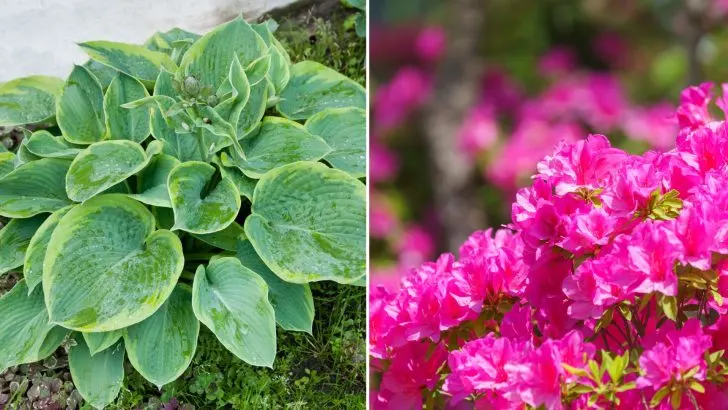What’s a garden without hydrangeas? Absolutely incomplete!
These bold, gorgeous blooms deserve a special spot in every garden. Their vibrant flowers already steal the show, but pair them with the right companions, and your garden will be the talk of the neighborhood.
Here are 11 plants that not only complement hydrangeas but also elevate your outdoor space to a whole new level.
1. Azaleas – A Match Made in Gardening Heaven
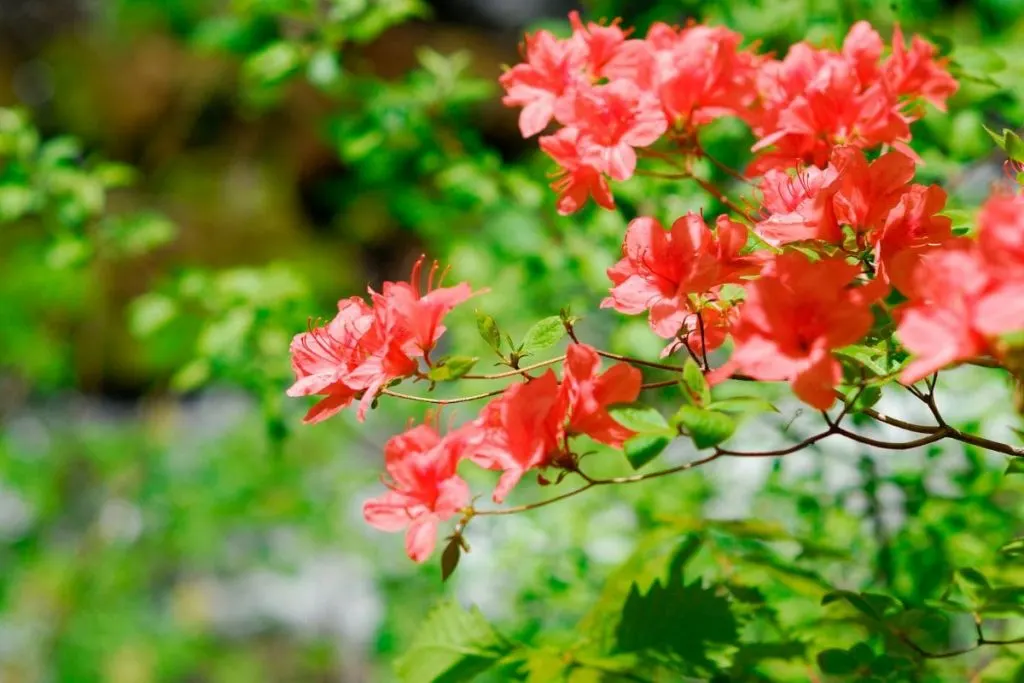
Azaleas and hydrangeas are like the best friends of the plant world. They love the same conditions: moist, acidic soil and a bit of shade. No fighting for nutrients here – just perfect harmony.
Azaleas often bloom earlier than hydrangeas, but with the right varieties, you can time it so their flowers overlap beautifully. White and yellow azaleas look stunning next to blue hydrangeas, while pink azaleas pop beside white hydrangeas.
Quick tip: Don’t plant azaleas near pink hydrangeas if you want to keep them pink. Azaleas love acidic soil, which might turn your pink hydrangeas blue!
2. Coral Bells – The Colorful Sidekick
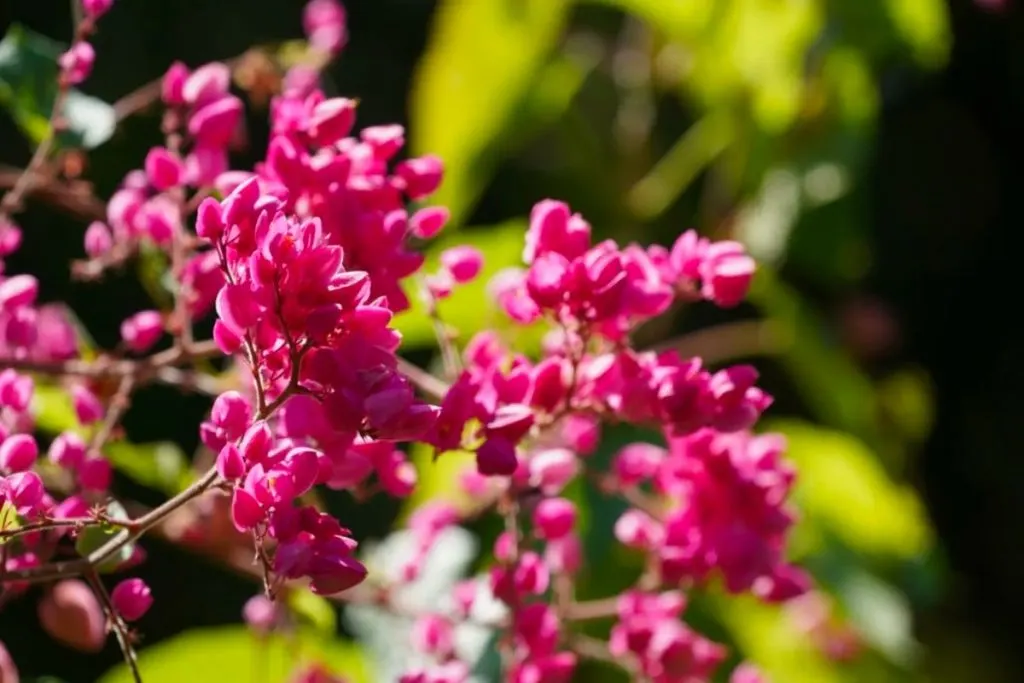
With their colorful foliage, coral bells (also known as Heucheras) are the perfect sidekick to hydrangeas. These plants don’t just show off with their leaves – they’ve also got charming bell-shaped flowers that butterflies adore.
A winning combo? Lime green coral bells paired with white hydrangeas. The color contrast is pure magic. Best of all, they thrive in the same moist, nutrient-rich soil as hydrangeas, making them low-maintenance garden companions.
3. Boxwood – A Formal Touch with a Twist
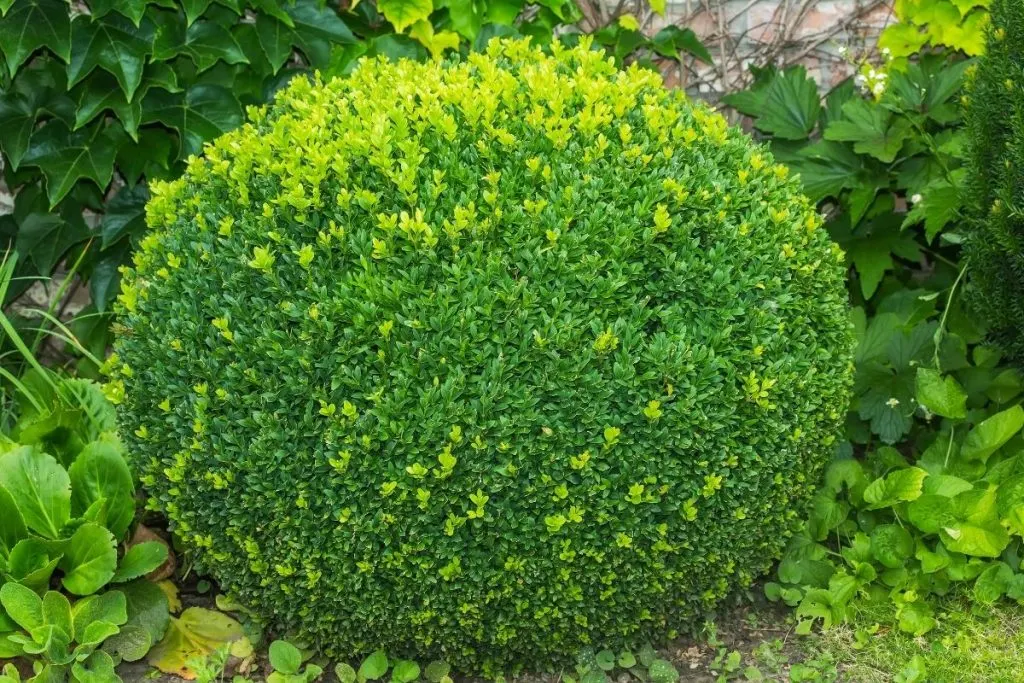
If you’re going for a more structured garden look, boxwood is your go-to. Its neat, evergreen form contrasts beautifully with the wild, abundant blooms of hydrangeas.
Plant a row of boxwood behind your hydrangeas for a lush, layered effect. These plants also share similar soil and watering needs, so they’re happy neighbors. Just give them some shade on scorching summer days.
4. Hostas – The Shady Garden Superstar
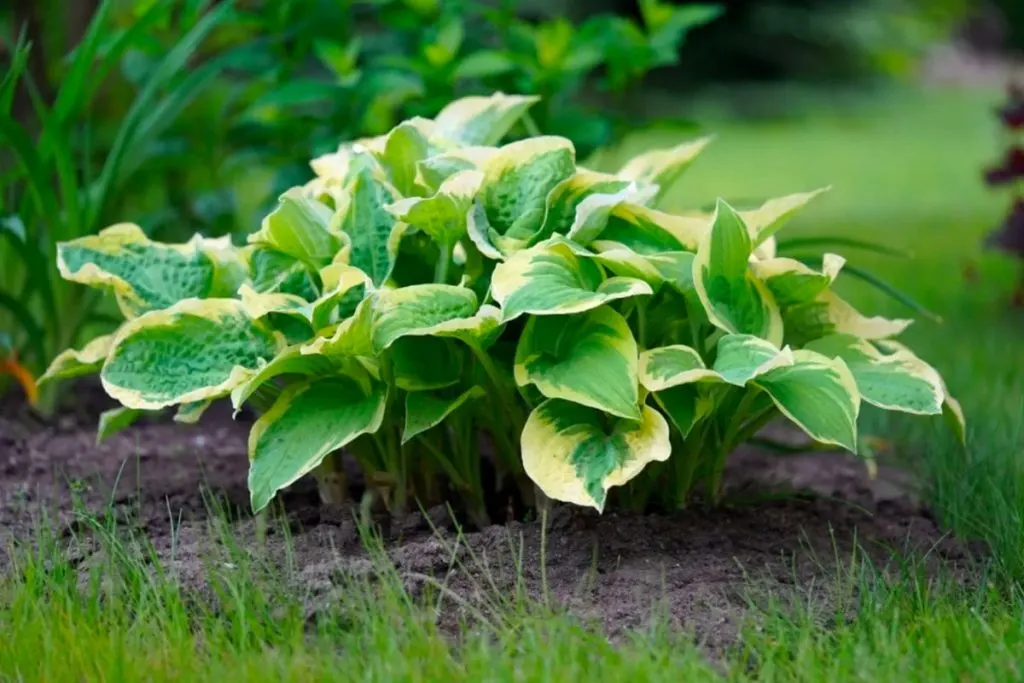
There’s a reason you see hostas in so many gardens – they’re shade-loving superstars! Their bold, oversized leaves look incredible paired with hydrangeas, and they’re super easy to care for.
Hostas love moist, well-drained soil, just like hydrangeas, making them perfect partners. Plus, the variety of leaf colors – greens, blues, and variegated patterns – adds extra visual interest.
5. Astilbes – Feathered Elegance
For a touch of elegance, look no further than astilbes. Their feathery plumes come in shades of pink, purple, and white, and they make a stunning pair with hydrangeas. Plant deep purple astilbes next to white hydrangeas for a bold, sophisticated look.
Pollinators love them, too, but here’s the best part: Deer don’t! So, you can enjoy their beauty without worrying about your local wildlife turning them into a snack.
6. Sweet Potato Vine – Groundcover with Style
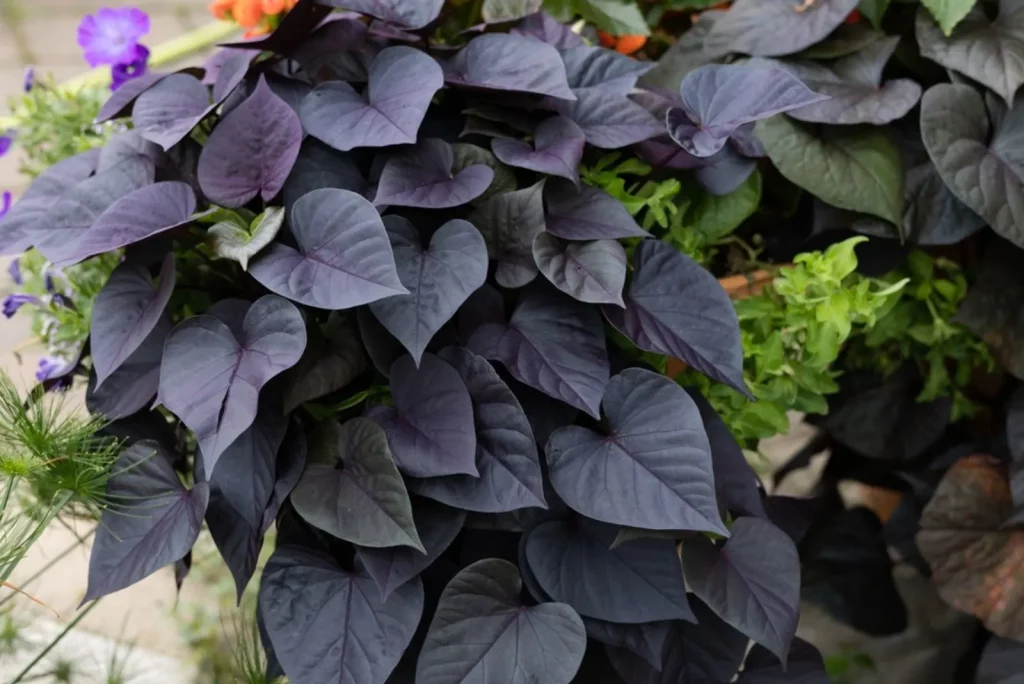
Looking for a groundcover that does more than just cover ground? Sweet potato vine is the answer. With foliage that ranges from bronze to purple and even nearly black, it’s a perfect match for hydrangeas’ dramatic blooms.
Bonus: It’s easy to grow and can quickly fill in those bare spots in your garden.
7. Ornamental Grasses – The Unsung Heroes
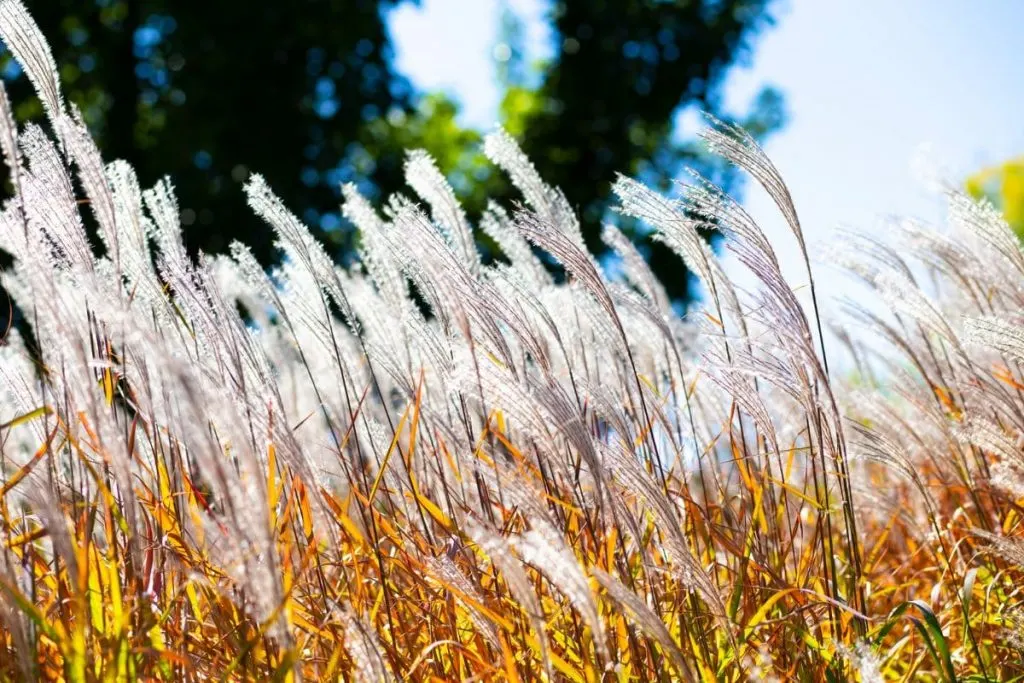
Ornamental grasses bring movement and texture to your garden, balancing out the bold blooms of hydrangeas with their slender, flowing leaves. For borders, go with smaller varieties like maiden grass or fountain grass.
Or, for a show-stopping effect, plant pink muhly grass next to your hydrangeas. The soft pink plumes against hydrangeas’ bold colors create a dreamy, eye-catching display.
8. Pittosporum – Evergreen Elegance
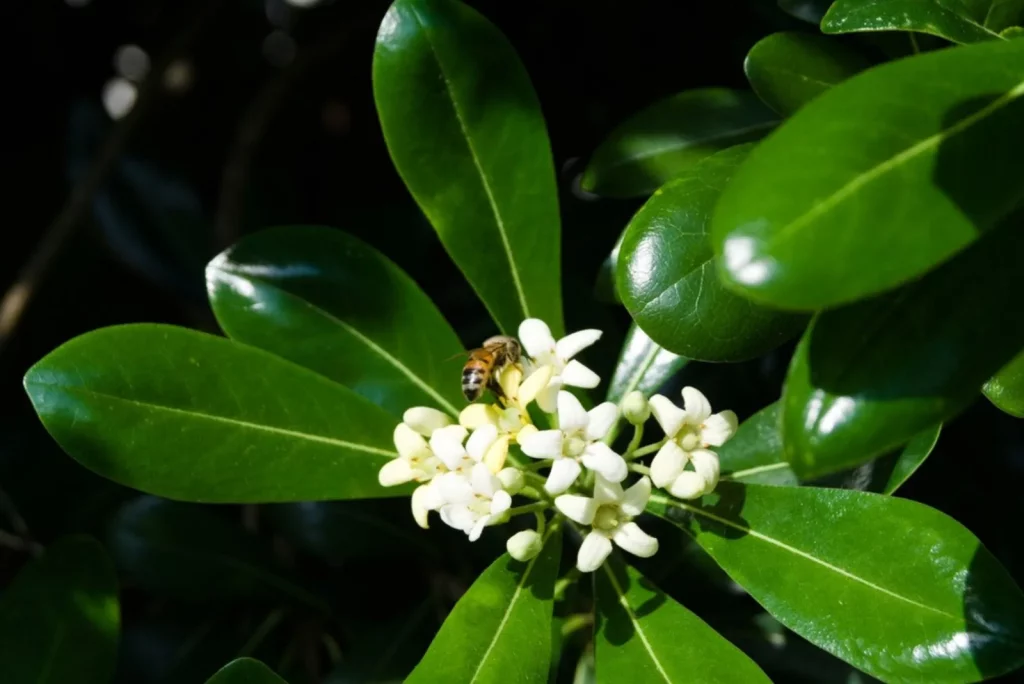
For a versatile, evergreen hedge that pairs beautifully with hydrangeas, Pittosporum tobira (Japanese mock orange) is a top choice. Its whorled foliage and white flowers complement the large, showy blooms of hydrangeas.
Just keep in mind, this plant doesn’t like cold, soggy soil, so make sure it’s planted in a well-drained spot.
9. Veronica (Speedwell) – Mass Planting Marvel
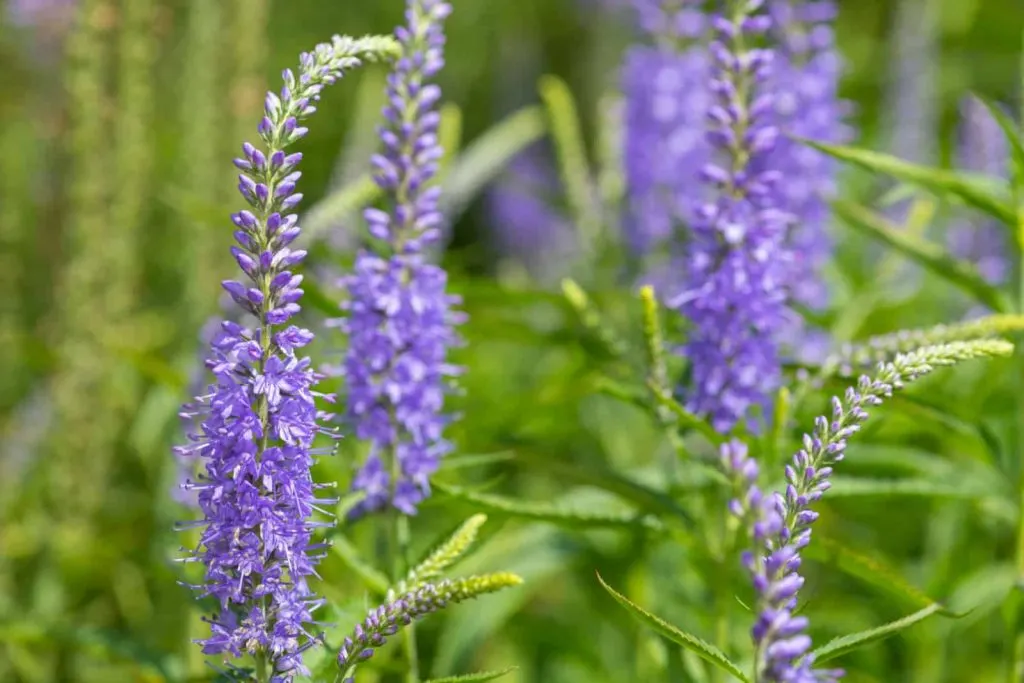
If you love the look of mass plantings, Veronica (or Speedwell) is your new best friend. This deer-resistant plant comes in a range of stunning colors – think pinks, blues, and whites that look fantastic beside hydrangeas.
And here’s the best part: Veronica thrives in both acidic and alkaline soils, so it pairs well with either blue or pink hydrangeas. Whether your garden gets full sun or shade, Veronica will flourish.
10. Swedish Ivy – The Easygoing Companion
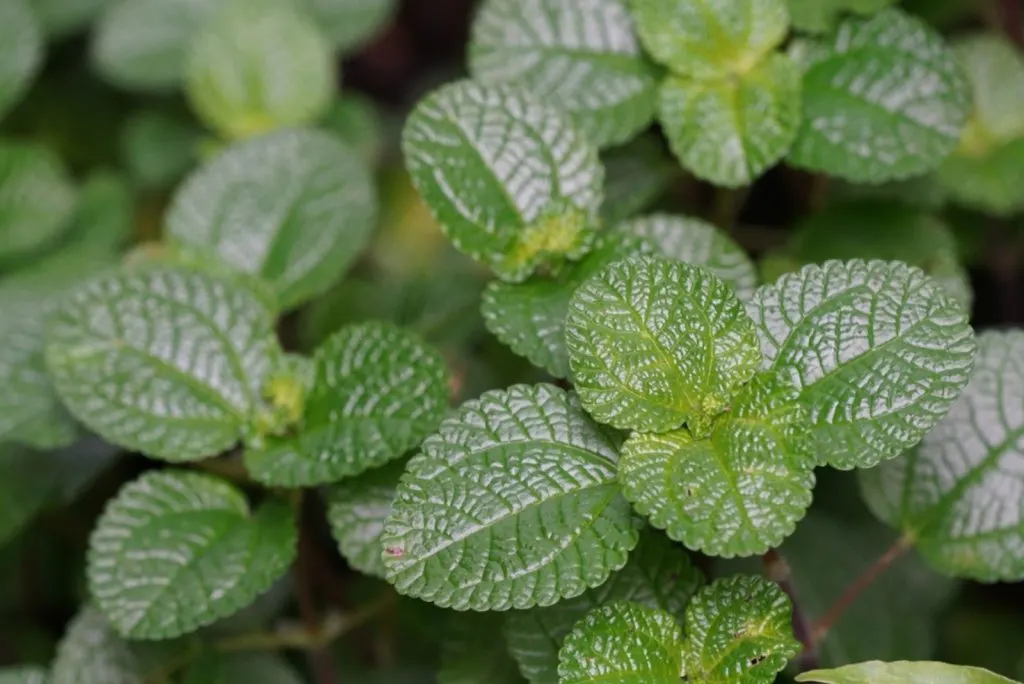
Swedish ivy and hydrangeas are garden buddies for a reason – they both love similar growing conditions. This low-growing, glossy-leafed plant is perfect as a groundcover around hydrangeas, and its tiny white flowers add a delicate touch.
Need more Swedish ivy? It’s easy to propagate. Just snip a few cuttings, plant them, and watch them spread!
11. Ferns – Evergreen Charm
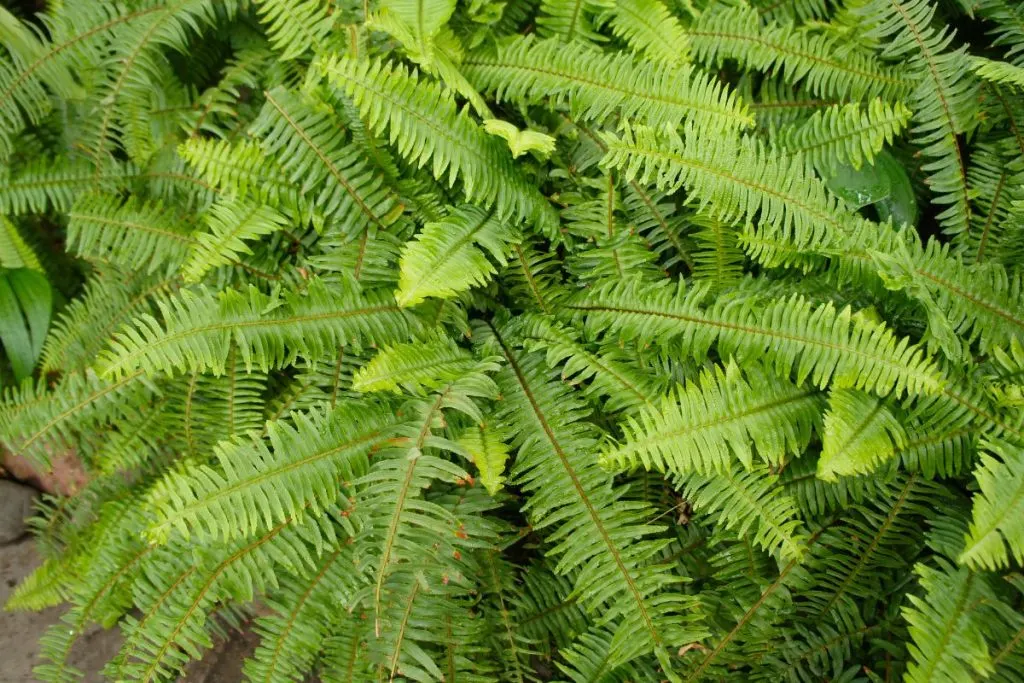
Ferns bring year-round greenery to your garden, and they thrive in the same moist, nutrient-rich soils as hydrangeas. When choosing a fern to pair with hydrangeas, consider its pH preferences.
For example, the Japanese painted fern loves acidic soil, making it a perfect match for blue hydrangeas. If you’re planting pink hydrangeas, opt for a fern that prefers more alkaline conditions, like maidenhair fern.
Plants to Avoid Near Hydrangeas
While you’re building your hydrangea dream team, be sure to avoid planting these sun-lovers nearby:
• Artemisia
• Coneflower
• Dianthus
• Sedum
• Peonies
And steer clear of these shade-loving plants that don’t play well with hydrangeas:
• Lily of the Valley
• Primrose
• Coleus
• Lamb’s Ear
Finally, avoid pairing hydrangeas with plants that thrive in dry soil, like:
• Lavender
• Portulaca
• Cactus varieties
Key Tips for Happy Hydrangeas
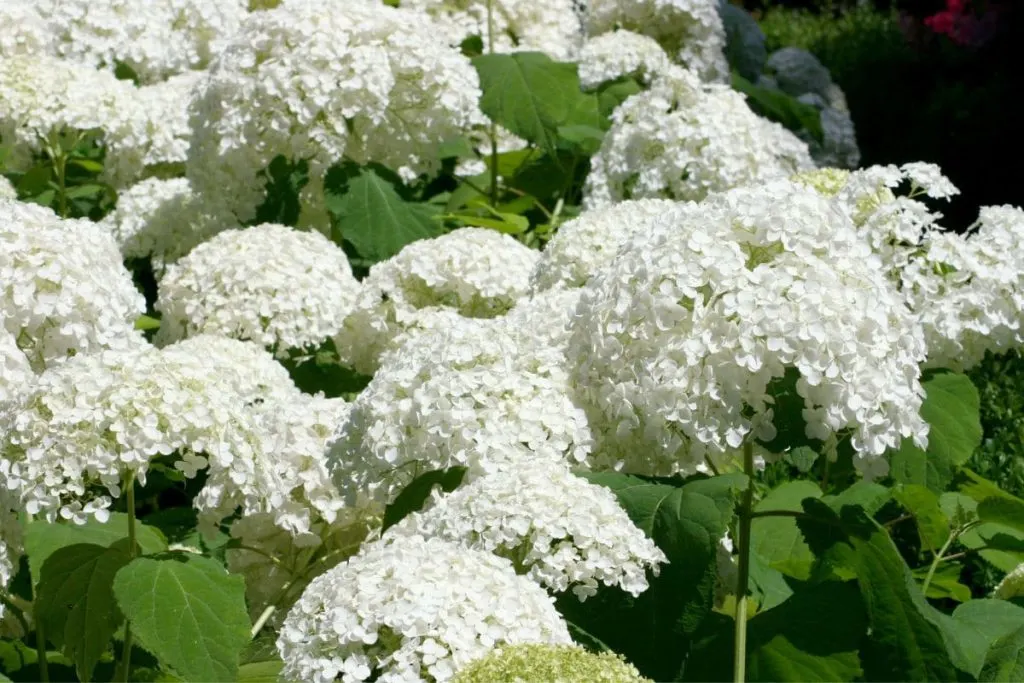
A little care goes a long way with hydrangeas. These stunning plants need regular feeding to bloom their best. Also, keep an eye on your soil’s pH levels – if you want blue hydrangeas, make sure to use acidic fertilizers. For pink hydrangeas, stick to a more alkaline approach.
And don’t forget the mulch! A 3-inch layer of mulch will help regulate soil moisture and protect the roots.
Now that you’ve got the inside scoop on hydrangea companion plants, it’s time to grab your gloves and create a vibrant, beautiful garden that’s ready to shine all season long!

